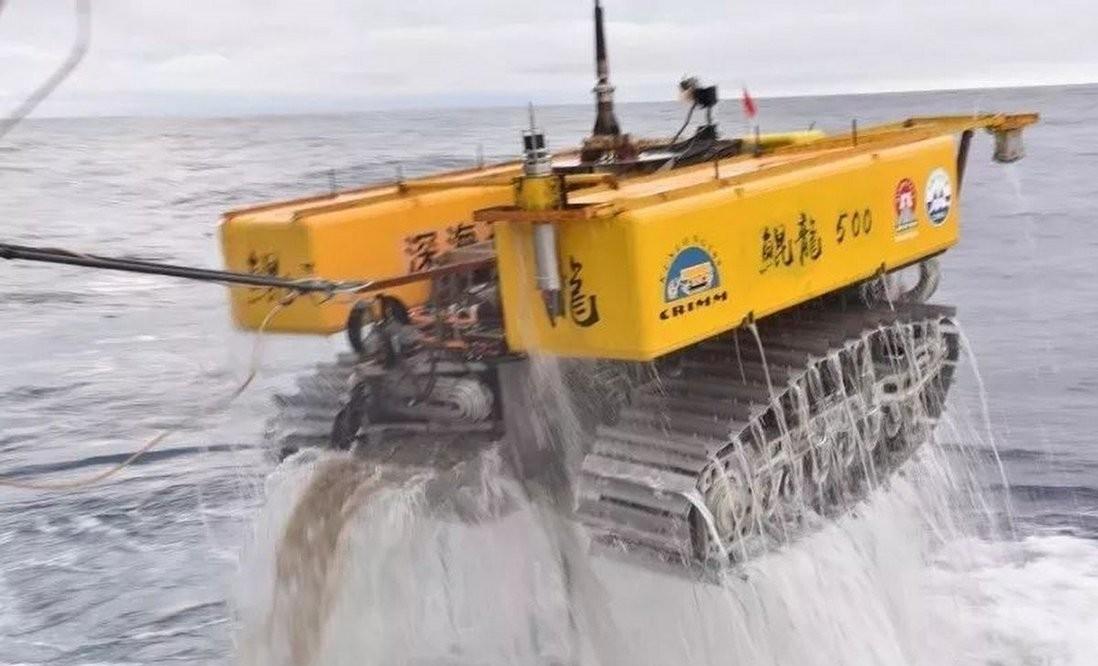In the diving competition at the Tokyo Olympics in Japan, Chinese athletes relied on cutting-edge fluid mechanics technology to win almost all the gold medals and impressed the audience with the "water splashing technique". Researchers in China are now using similar techniques to help bulky industrial robots dive in a similar way.
1. Chinese researchers break through the mining splash problem and prepare for the excavation of seabed mineral resources
In recent years, more and more Chinese deep-sea mining robots have been put into the world's oceans. China's self-developed "Kunlong 500" model can operate at a depth of up to 6,000 meters when designed, and within an hour, the machine can locate, decompose and collect 10 tons of ore. However, as the trial run time increases, scientists and engineers have identified problems that, if not properly resolved, could affect the long-term operation of these machines.

China's deep-sea mining machine "Kunlong 500" was tested in 2018
A typical deep-sea mining robot is about the size of a bulldozer and can withstand enormous pressures on the seabed, sometimes thousands of meters deep. But when the machine enters the water, it inevitably produces huge splashes that can release huge amounts of energy in an instant, impacting the mechanical parts, electronics and tether parts of the automatic mining machine.
Experiments conducted by Professor Dai's team at the School of Mechanical and Electrical Engineering at Central South University in Changsha show that in order to avoid harming mining machines, the speed of entering the water should be limited to 2 meters per second, but there are many uncertainties on the high seas, which is not an easy task.
Splashes made by deep-sea mining robots have complex structures, including robotic arms carrying various tools, similar to human splashes. But unlike free-fall divers, the robot descends through ropes, the researchers say, and the wobble caused by wind and waves increases the uncertainty of its movement.
According to the new study, it can sometimes hit the ocean surface at a relative speed of 4 meters per second, producing splashes that are too big for machines to withstand, if not faster. At a speed of about 2 meters per second, the robot can strike a balance between safety and efficiency.
The researchers also found that the area that received the greatest impact was not the generally thought bottom of the robot, but the lower end of the robotic arm and its nearby body structure, and this knowledge will help operators reduce the imbalance caused by the impact.
2. Japan and the United States are "mired in the mire", and China has learned its lesson and proposed not to damage the environment
As early as the 1950s, some Western countries, including the United States, conducted experimental excavations for deep-sea mining. Most of these efforts have failed. Last year, Nautilus Mining, a Canadian company that led the development of underwater mining technology in the West, went bankrupt.
The biggest challenge is the environment, which affects ecosystems that humans still know very little about. In an advisory report submitted to the central government earlier this year, Professor Wang, a senior marine geologist in Shanghai, said China had taken a leading position in deep-sea research and technology in recent years, but that It needed to learn from The West and avoid falling into the trap. Some countries, including the United States and Japan, underestimate the technical and environmental challenges of deep-sea mining and pay a heavy price for it.
While China still relies on foreign supplies for some components, it has made a series of breakthroughs in deep-sea mining hardware, including hydraulic pumps for extreme environments, artificial intelligence for robot control, and communication and positioning technology for the deep sea.
Researchers have also received more funding from the government to study the deep-sea environment, finding previously unknown fish and giant viruses in some of the deepest places on Earth. The government says this knowledge and technological advantage will help China lead the drafting of industry standards and environmental protection agreements for deep-sea mining activities at the United Nations.